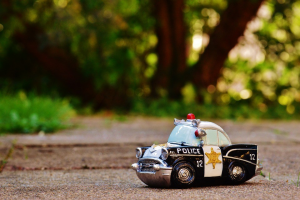Widgetized Section
Go to Admin » Appearance » Widgets » and move Gabfire Widget: Social into that MastheadOverlay zone
A Peek at Policing: My Experience from a Ride Along
The views expressed are those of the author and do not necessarily reflect the views of ASPA as an organization.
By Emily Paulson
April 15, 2016
 I recently had the opportunity to go on a police ride along in a Minneapolis suburb. Arguably one of the most essential forms of public service, policing has been under extra scrutiny of late. Because of this, I wanted a better understanding of what law enforcement officers do and face.
I recently had the opportunity to go on a police ride along in a Minneapolis suburb. Arguably one of the most essential forms of public service, policing has been under extra scrutiny of late. Because of this, I wanted a better understanding of what law enforcement officers do and face.
To request a few hours in an officer’s passenger seat, I checked the city’s website for instructions. After reaching out to a designated contact within the police department, I was promptly provided with a ride along request form. I filled it out, submitted it and was scheduled before I knew it.
A Good Start
The morning of my appointment had arrived. I checked in with the front desk staff, who let my ride along companion know I was waiting in the lobby.
Officer H, dressed in a patrol uniform, greeted me with a smile and sturdy handshake. He had me sign a waiver, then our adventure began with a tour of the department. I met the support services staff and other officers. I also took a peek at the jail.
Something that struck me right away was the number of women I encountered. Law enforcement is still a very male-dominated occupation but Officer H said this particular department had one of the higher percentages of female officers in the nation. Cool.
After making the rounds on site, we got into a police car to begin patrol. Pulling out of the lot, Officer H told me about his background and asked me what I hoped to learn that day. I’d been nervous the conversation would feel awkward, but we had no trouble filling the cruiser with relevant, helpful chatter. The police radio, of course, also helped keep silence at bay.
What We Did
We stayed busy. We responded to a call at a cellphone store, where the owner was reporting a hostile customer that wouldn’t leave and was shouting racial slurs. We made traffic stops. We made two phone calls to victims of previous crimes. We responded to an incident where a driver pulled a gun on another driver, for which we ended up working with officers from a neighboring city.
In every instance, I got to be right at Officer H’s side, watching him interact with the public and his colleagues. The exception was the traffic stops because they’re really dangerous. For my safety, I was told to stay buckled up.
Aside from responding to requests from dispatch and answering my thousands of questions (OK, maybe not thousands), Officer H also did a lot of waving. Children playing in the yard would wave. Walkers and joggers would wave. Other drivers would wave. He’d always wave back. For some reason, this really warmed my heart. Especially with the children, because he’d slow the car to make sure they could see him.
After our busy day, he recommended some ways I could learn more: books to read, educational programs to watch and people to interview. He also said I’d be welcome back. After another handshake and probably three too many “thank-yous” from me, we parted ways.
The Takeaways
Here are a few of my takeaways. I can’t accurately say they’re true for all police everywhere, but they’re certainly true for Officer H.
His job is really hard. With very few exceptions (i.e., community outreach, events), the situations a police officer enters are bad before they even arrive on scene. Emotions are high. Something has gone wrong. Someone needs education about the law or someone needs to be held accountable for breaking it. This leads to a lot of things: panic, defensive attitudes, disrespect, erratic behavior, blame shifting, fear, etc. It takes a lot of patience, thick skin and a true dedication to public service to do this work every day.
He’s smart. Listening to Officer H talk about his work—from specific response tactics to the city’s diversity to current events to criminal psychology—it was clear he knew his stuff. It was clear he cared enough to know his stuff.
He likes people. It was fun—or at least interesting—to hear Officer H generalize about the public he serves. He said more so than dealing with bad people, he deals with bad decisions. I liked that. In many cases, crime occurs because of foolishness (or perhaps lack of knowledge/information), as opposed to malicious intent.
He really cares about safety. As likable and friendly as Officer H was, he also meant business. He was kind and respectful to everyone we encountered, but he also quickly took control of each situation. He was straight-forward, professional and he listened. Listening, he told me, is one of the most important things an officer can do. It was clear he takes his job seriously, as he very well should.
I’m so glad I decided to go on a ride along and I highly recommend the experience for anyone interested in learning more about our women and men in blue.
Author: Emily Paulson is an MPA student at Hamline University’s School of Business in Minneapolis. She’s carving out a career in public service and believes in firm handshakes and shameless smiles. You can contact her at [email protected]. She’d love to hear from you.


 (2 votes, average: 4.50 out of 5)
(2 votes, average: 4.50 out of 5)
Follow Us!